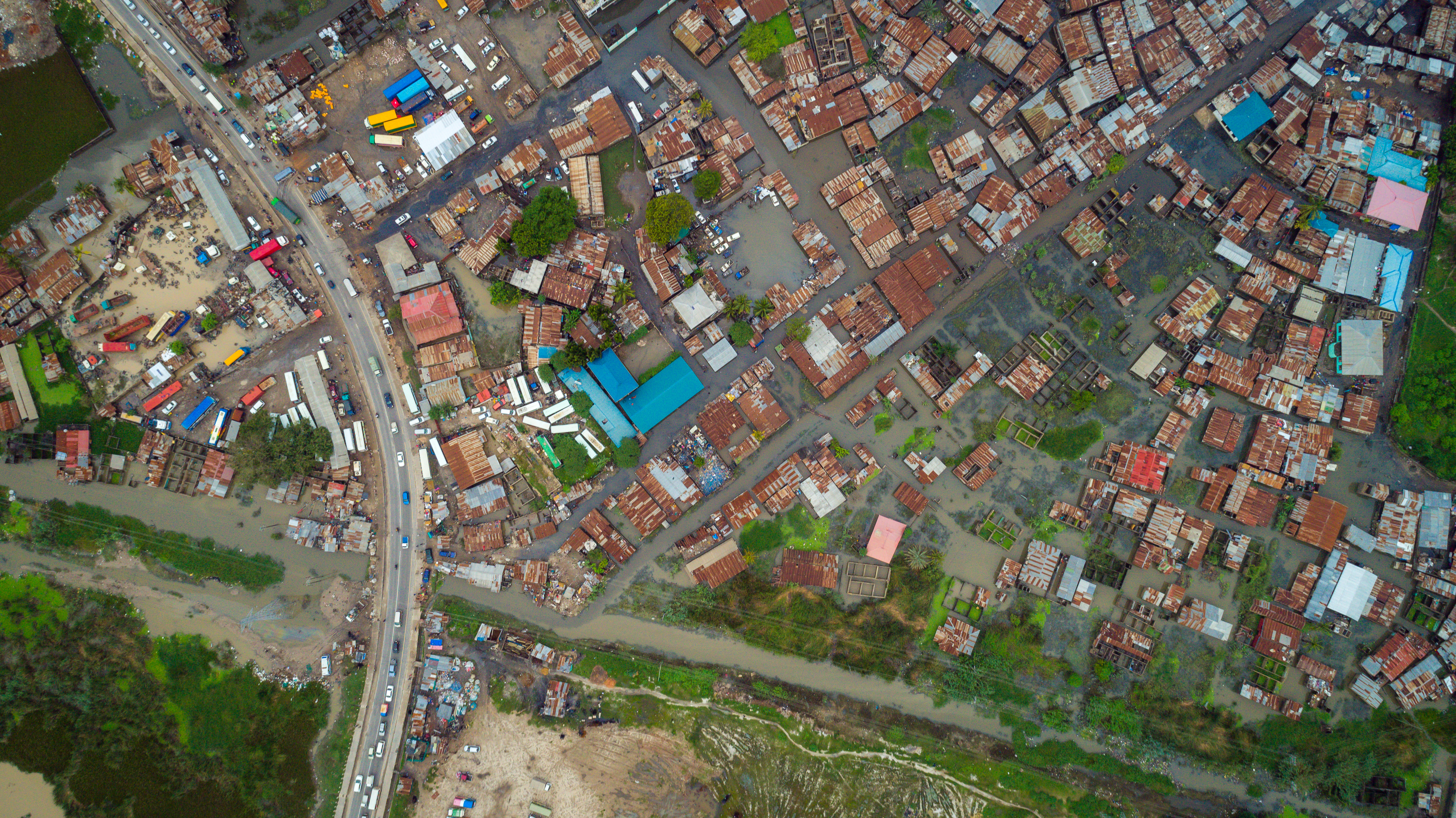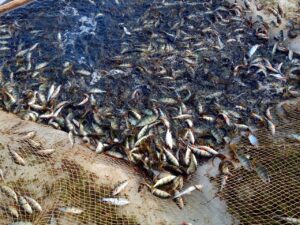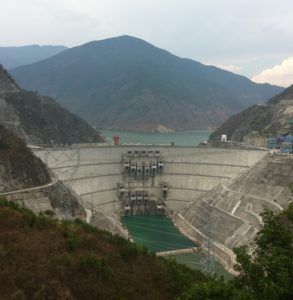Summary
Coastal cities across Africa and the world are growing at a tremendous rate, with profound implications for urban residents and the coastal environments in which they live. In East Africa, coastal nations cover a diverse geographic region, from Sudan in the North and Tanzania in the South, to the island nations of Madagascar, Comoros, Seychelles, and Mauritius.1This report uses the African Union definition of East Africa. The coastal and island nations in this region are Comoros, Djibouti, Eritrea, Kenya, Madagascar, Mauritius, Seychelles, Somalia, Sudan, and Tanzania. In these nations, coastal urban centers are integral to social and economic security, sustaining significant blue economy industries and supporting large and growing populations. However, these coastal cities also face compounding ecological, financial, and political risks resulting from rapid urbanization and climate change.
Rapid urbanization in East Africa—while bringing positive benefits—poses challenges to the future sustainability of its coastal cities. In many cases, urban expansion has outpaced the development of housing, waste management, and transport infrastructure. Poor urban infrastructure management has exacerbated social and health inequities, leading to governance gaps and erosion of the natural environment which supports the city. On top of this, coastal cities in East Africa are exposed to accelerating climate risks. Several regional climate assessments have identified East Africa as among the most threatened coastal regions globally, with significant changes to temperatures, rainfall, extreme weather events, and sea levels expected by the end of the century.2Louis Celliers and Cebile Ntombela, “Urbanisation, Coastal Development and Vulnerability, and Catchments,” Regional State of the Coast Report, United Nations Environment Programme, March 2016. Together, these challenges increase the risk of flooding, stress ecosystems upon which urban residents depend, degrade outdated infrastructure, and have the potential to upend economic stability.3IPCC, 2021, “Summary for Policymakers,” Climate Change 2021: The Physical Science Basis. Contribution of Working Group I to the Sixth Assessment Report of the Intergovernmental Panel on Climate Change, ed. V. Masson-Delmotte, P. Zhai, A. Pirani, S. L. Connors, C. Péan, S. Berger, N. Caud, Y. Chen, L. Goldfarb, M. I. Gomis, M. Huang, K. Leitzell, E. Lonnoy, J. B. R. Matthews, T. K. Maycock, T. Waterfield, O. Yelekçi, R. Yu, and B. Zhou (Cambridge: Cambridge University Press, in press). Without action, these changes can undercut the health and potential of the sustainable blue economy and undermine the economic, food, and environmental security of coastal cities.
The Stimson Center has developed the Climate and Ocean Risk Vulnerability Index (CORVI) to help municipal, regional, and national decision makers take action. CORVI compares a diverse range of climate- and ocean-related risks and vulnerabilities across the land and seascape to produce a coastal city risk profile. The city risk profile focuses on nearly 100 climate and ocean risk indicators across 10 categories, grouped under three risk areas: ecological, financial, and political. These indicators cover a range of issues, including the vulnerability of vital infrastructure, the health of marine ecosystems, and urbanization dynamics. Each indicator and category are scored using a 1-10 risk scale relative to other cities in the region, providing a simple reference point for decision makers looking to prioritize climate action and resilience investment.
CORVI combines empirical data and survey data from local experts to fill data gaps and develop a more complete understanding of how climate-related risks are impacting the coastal city.4Michael Oppenheimer, Christopher M. Little, and Roger M. Cooke, “Expert Judgement and Uncertainty Quantification for Climate Change,” Nature Climate Change, no. 6 (April 2016): 445–451, accessed September 7, 2021, https://dx.doi.org/10.1038/nclimate2959. CORVI risk scores—which form the basis of a coastal city risk profile—are augmented with existing academic and grey literature, government documents, and key informant interviews to develop a comprehensive narrative and understanding of the coastal city’s climate risks and identify priority policy recommendations. In addition to providing decision-makers in the specific city with a complete risk picture, the data from each city risk profile is added to a global database, allowing users to compare different city risk profiles and assess regional trends.
CORVI in East Africa
In collaboration with the Western Indian Ocean Marine Science Association (WIOMSA) and Coastal & Marine Resource Development (COMRED), the Stimson Center expanded the CORVI project to East Africa by conducting two CORVI city assessments in Dar es Salaam, Tanzania, and Mombasa, Kenya. Both cities are critical urban centers, not only to the economic development of Kenya and Tanzania but also to the broader region and landlocked countries in Central Africa. However, significant and unplanned urbanization is degrading the terrestrial and marine environment, and climate change poses significant risks to Mombasa’s and Dar es Salaam’s residents, the blue economy, and the long-term sustainability of both cities.
Dar es Salaam, Tanzania
A sprawling city, home to 6.4 million people, Dar es Salaam is an economic powerhouse in Tanzania, responsible for 17 percent of the national GDP. It serves as a primary entry point for trade and tourism. With an annual urbanization rate of 5.6 percent, Dar es Salaam is expected to grow to 13.3 million residents by 2035. This dramatic growth poses challenges that are being intensified by climate change. While Dar es Salaam is relatively safe from tropical cyclones, heavy rainfall and flooding from both land and sea are a constant concern. The CORVI risk profile identified other issues, including:
- High reliance on climate-vulnerable industries such as shipping, tourism, agriculture, and fishing heightens economic vulnerability.
- Unplanned coastal development is harming the terrestrial and ocean environment, contributing to coastal erosion, freshwater shortages, and degraded fish stocks and ecosystems. These negative impacts, in turn, further threaten the long-term sustainability of agriculture and coastal tourism.
- Vulnerability to flooding increases risk to human capital and key infrastructure, and can hamper economic development. These risks are driven by extensive unplanned settlements—with 75 percent of the city population living in informal housing—and inadequate infrastructure, particularly roads, bridges, and the electrical grid.
The government of Tanzania has recognized the need to build resilience in Dar es Salaam. This is evident in the multiple national adaptation strategies and climate adaptation project partnerships that exist between local and international funders. However, to overcome existing financial and technical gaps, the government should focus on efforts to integrate climate adaptation planning and investment. It is crucial that planning and future activities connect the development of key sectors, the terrestrial and marine environment, and the needs of vulnerable communities. To build resilience and plan for systemic risks, the CORVI risk profile identifies three priority areas in need of action:
- Establish a permanent coordination structure to explicitly integrate ocean risks and marine spatial planning into the city master plan. To ensure a participatory process, this structure should include national and city-level governing entities, civil society, and the private sector and help disperse information about climate risks and promote the narrative that effective environmental and management of the land and seascape is critical to building resilience, rather than obstructing development.
- Expand flood adaptation programs, with a focus on meeting the needs of vulnerable neighborhoods by expanding community-based savings schemes and strengthening waste management systems. Specific actions include upgrading informal settlements to make them more resistant to flooding; expanding waste management services to vulnerable communities; increasing access to financial services, including community saving schemes, to improve household-level resilience; and further integrating nature-based solutions into flood defenses.
- Enhance climate adaptability in port, tourism, and urban agricultural sectors by protecting them from climate risks and ensuring that negative environmental impacts are minimized. To do this, an integrated strategic coastal environmental assessment is needed to incorporate various stakeholder and economic interests, including balancing hard infrastructure and economic development with natural infrastructure solutions.
By advancing cross-cutting policies and channeling resources and investment to these areas, Dar es Salaam can reduce its climate vulnerabilities and work to build a sustainable future.
Mombasa, Kenya
Centered on an island and with the largest international seaport in East Africa, Mombasa is critical to the economic security of Kenya and landlocked nations in East and Central Africa. Home to 1.2 million people, Mombasa has seen its population almost double over the past 20 years, posing challenges to urban planning and the natural environment. The blue economy in Mombasa is critical to the economic prosperity of the city and the wider East African region. However, climate and ocean risks threaten the tourism, shipping, and fisheries industries. Although Mombasa is relatively safe from cyclones, flooding from erratic rainfall and sea-level rise is a major problem. The CORVI risk profile identified other issues, including:
- Growing climate risks to key blue economy sectors, including fishing, tourism, and shipping, increase vulnerability, particularly for poorer city residents who depend on these sectors for economic security.
- Marine pollution from coastal hotels, industrial shipping, and dredging is degrading marine ecosystems and fish stocks, which underpin the blue economy.
- Low-lying coastal neighborhoods face growing flood risks from sea-level rise, storm surge, and increasingly erratic rainfall. This vulnerability is heightened by infrastructure and housing deficits, with informal housing proliferating across the city.
The CORVI profile shows that managing climate risks across Mombasa’s unique and growing cityscape is key to the health and safety of city residents and the blue economy. By strengthening social and economic resilience and incorporating urban risks into marine planning, Mombasa can mitigate the threat posed by climate and ocean risks and build a resilient and sustainable future through the following priority actions:
- Integrate urban resilience into coastal and marine spatial planning. Expanding the role of the Mombasa County Executive in nationally led integrated coastal zone management activities is critical for ensuring that future projects and actions meet the urban and ocean needs of Mombasa City. Similarly, to ensure that urban environmental risks are incorporated into ocean planning, it is essential that Mombasa City planners be included in marine spatial planning activities.
- Increase investment to build resilience to climate risks across key sectors, including tourism, shipping, and fishing. The marine environment underpins the blue economy. Specific actions include financing efforts to reduce pollution from ship ballast and raw material processing at Mombasa, encouraging ecotourism as an entry point to further sustainable ocean management, and expanding the capacity of Beach Management Units to provide training to avoid unsustainable fishing practices. Finally, the integration of green/blue infrastructure should be increased to protect key sectors from climate change.
- Improve urban planning by investing in climate-smart infrastructure and housing in vulnerable neighborhoods. To upgrade informal housing, successful joint partnerships between the Mombasa County Governance and the private sector should be expanded. These efforts should also be augmented with efforts to improve waste management. Small-scale efforts, including requiring biodigesters in new homes, should also accompanied by large-scale efforts to improve and expand sewage facilities.
With these measures, Mombasa can drive financial resources and build climate resilience to ensure a safe and sustainable future.
As the risks from climate change continue to grow, coastal cities in East Africa face an increasingly uncertain future. In the face of rapid urbanization and with limited financial resources, city, national, and regional decision-makers need access to data and assessments that help them understand the complete risk picture to prioritize investment and avoid the dangers of maladaptation. In this environment, CORVI is a valuable tool for identifying and categorizing risk across sectors, aiding in the design of integrated urban-ocean solutions, and accessing climate investment to build resilience.
Notes
- 1This report uses the African Union definition of East Africa. The coastal and island nations in this region are Comoros, Djibouti, Eritrea, Kenya, Madagascar, Mauritius, Seychelles, Somalia, Sudan, and Tanzania.
- 2Louis Celliers and Cebile Ntombela, “Urbanisation, Coastal Development and Vulnerability, and Catchments,” Regional State of the Coast Report, United Nations Environment Programme, March 2016.
- 3IPCC, 2021, “Summary for Policymakers,” Climate Change 2021: The Physical Science Basis. Contribution of Working Group I to the Sixth Assessment Report of the Intergovernmental Panel on Climate Change, ed. V. Masson-Delmotte, P. Zhai, A. Pirani, S. L. Connors, C. Péan, S. Berger, N. Caud, Y. Chen, L. Goldfarb, M. I. Gomis, M. Huang, K. Leitzell, E. Lonnoy, J. B. R. Matthews, T. K. Maycock, T. Waterfield, O. Yelekçi, R. Yu, and B. Zhou (Cambridge: Cambridge University Press, in press).
- 4Michael Oppenheimer, Christopher M. Little, and Roger M. Cooke, “Expert Judgement and Uncertainty Quantification for Climate Change,” Nature Climate Change, no. 6 (April 2016): 445–451, accessed September 7, 2021, https://dx.doi.org/10.1038/nclimate2959.




